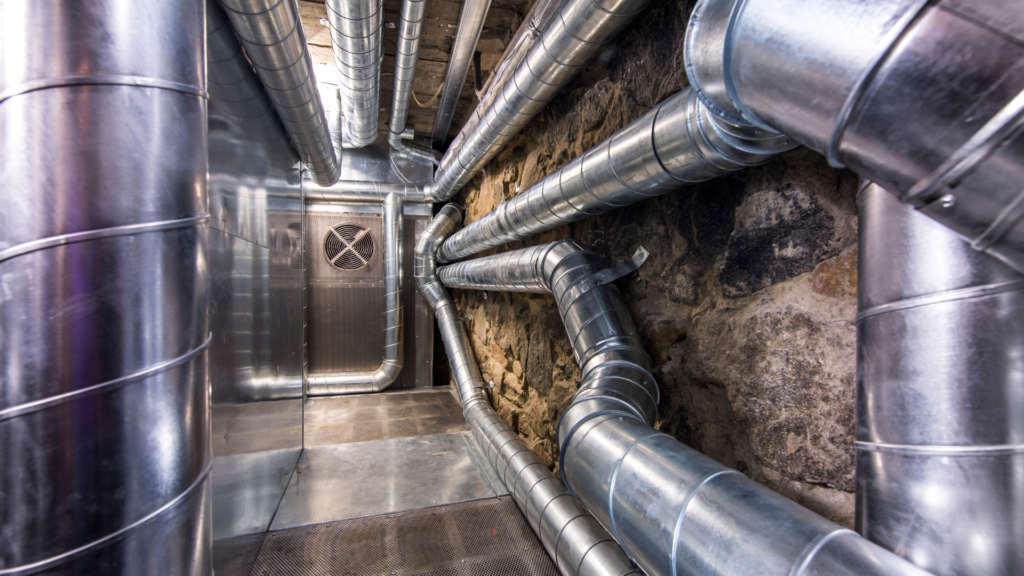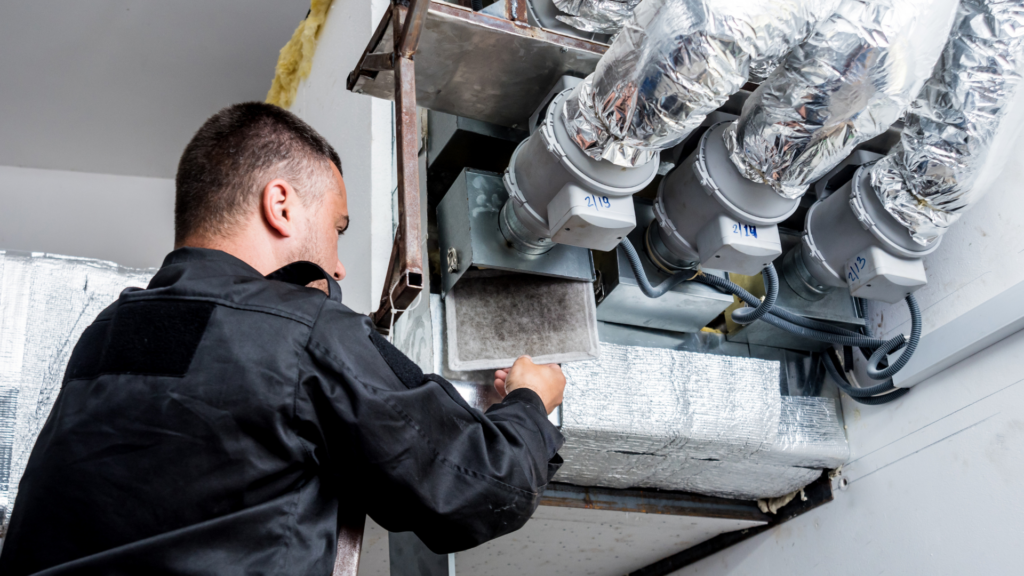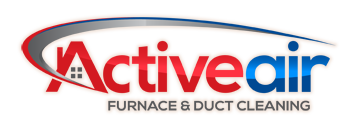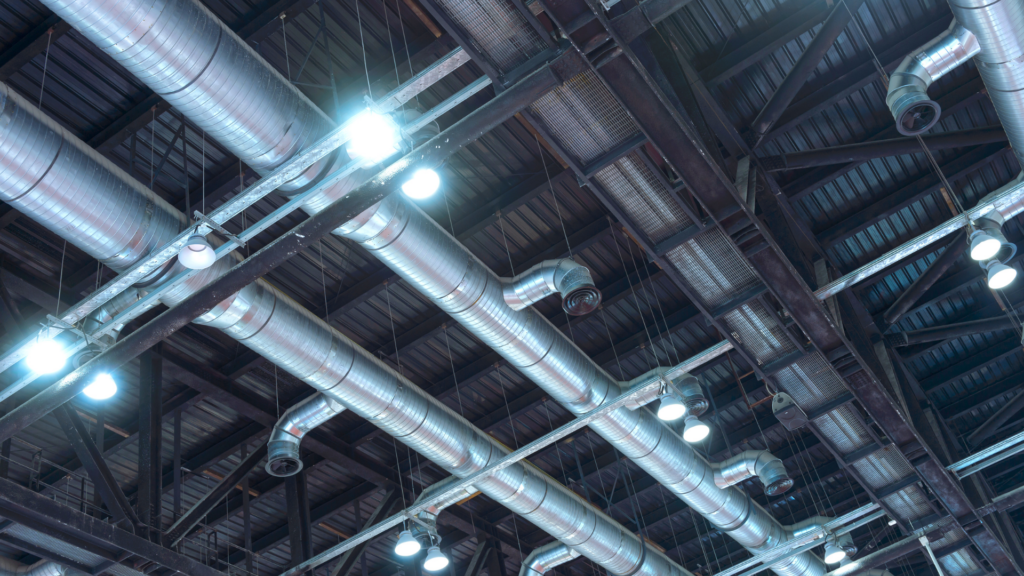One of the key components of any HVAC system is the ductwork. Duct systems are responsible for distributing air throughout a building, whether it’s for heating, ventilation, or air conditioning. Over time, these ducts can accumulate dust, dirt, and other contaminants that can affect the quality of the air we breathe.
Today, we’ll take a closer look at how residential and commercial ventilation systems work, and why duct cleaning is so important. We’ll explore the different types of contaminants that can build up in your ducts, and the potential health risks associated with poor indoor air quality. We’ll also discuss the benefits of regular duct cleaning, and some of the things you should look for when choosing a duct cleaning service.
Whether you’re a homeowner or a business owner, understanding the basics of duct cleaning is essential for maintaining a safe and healthy indoor environment.

Ventilation Systems
Proper ventilation is essential for maintaining good indoor air quality in both residential and commercial buildings. HVAC systems play a critical role in this by regulating temperature, humidity, and air circulation. Ductwork is a crucial part of the HVAC system as it serves as a pathway for air to move from the heating or cooling unit to different rooms in the building.
As air circulates through the dirty air ducts, it can pick up dust, dirt, and other contaminants such as pet dander, pollen, and mold spores. These contaminants can accumulate in the ducts over time and, if left unchecked, can compromise the quality of the indoor air. In addition to affecting air quality, dirty ducts can also cause the HVAC system to work harder, leading to increased energy costs and potential breakdowns.
Types of Ventilation Systems
There are several types of ventilation systems that are commonly used in homes and commercial buildings. Here are some of the most common types:
Exhaust ventilation system:
This system works by using fans to remove air from the building, which is replaced by fresh outdoor air. This type of system is often used in kitchens and bathrooms to remove moisture, smoke, and odors.
Supply ventilation system:
In this type of system, fresh air is supplied into the building from outside, either through a mechanical ventilation system or through natural ventilation methods such as opening windows and doors.
Balanced ventilation system:
This system uses both exhaust and supply ventilation to maintain a balanced flow of air in and out of the building. It can be achieved through mechanical means or through a combination of mechanical and natural ventilation methods.
Heat recovery ventilation system:
This system is designed to recover heat from the outgoing air and transfer it to the incoming fresh air, reducing energy costs and improving indoor air quality.
Natural ventilation system:
This type of system relies on natural air flow to provide ventilation, such as opening windows and using vents and other openings to allow air to circulate.

Prevent Health Problems and Hire Residential Duct Cleaner
Residential duct cleaning is an essential process for maintaining a healthy indoor environment in homes. Over time, air ducts in residential HVAC systems can become clogged with dust, dirt, pet hair, and other contaminants. This buildup can negatively impact the quality of the air you breathe inside your home.
Dirt in air ducts can also be a source of allergens, which can exacerbate respiratory issues such as asthma and allergies. In some cases, mold can grow inside ducts, which can lead to serious health problems.
The dirt and debris that accumulate inside air ducts can enter your house in several ways. First, when your HVAC system turns on, it can stir up the contaminants and circulate them throughout your home. This means that you and your family are breathing in particles that can cause health issues.
When there is a buildup of dust and debris inside your air ducts, your HVAC system has to work harder to maintain the desired temperature in your home. This can lead to increased energy costs and potentially expensive repairs.
To prevent these issues, it’s recommended to have your furnace cleaned on a regular basis by a professional HVAC technician. A thorough cleaning of your air ducts can remove any accumulated dust, dirt, and debris, improving the efficiency of your HVAC system and promoting healthy indoor air quality.
Commercial Air Duct Cleaning
Commercial air duct cleaning is an important process for maintaining a healthy and safe indoor environment in commercial buildings. Just like in residential HVAC systems, the air ducts in commercial buildings can accumulate dust, dirt, mold, and other contaminants that can affect the quality of the air inside the building.
In commercial buildings, the importance of air quality is even more critical as the building occupants may spend long hours in the building, and poor indoor air quality can affect their health and productivity. Additionally, commercial buildings have larger and more complex HVAC systems than residential ones, which means that a proper maintenance schedule and regular duct cleaning is even more important.
Commercial air duct cleaning typically involves a comprehensive inspection of the entire HVAC system, including the ductwork, fans, and coils. This inspection helps to identify any potential issues or areas of concern that may need attention. The HVAC technician will then use specialized equipment to clean the ducts, removing any accumulated dirt, dust, or debris.
In addition to improving air quality, regular commercial air duct cleaning can also improve the efficiency of the HVAC system, leading to lower energy costs and longer equipment life. It can also help to prevent potential fire hazards caused by accumulated dust and debris.
Commercial air duct cleaning should be performed by experienced and trained HVAC technicians who are equipped with the proper equipment and tools. Regular maintenance and cleaning can help to ensure that the building’s occupants have a safe and healthy indoor environment, and the HVAC system is functioning properly.

